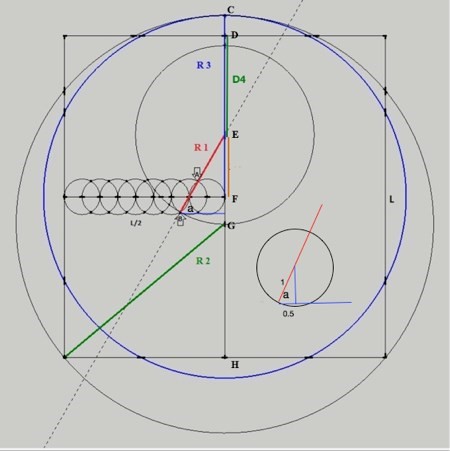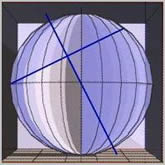Squaring the Circle--and Earth-Moon Ratio
This page explores the timeless challenge of squaring the circle, reflected in the delicate balance of
Earth and Moon. I bring no bold claims—just a quiet awe for the numbers that stitch creation together.
Numbers are the pulse of the cosmos. They trace the arcs of planets and the bloom of flowers, their
harmony mirrored in scripture’s depth. Geometry sings these numbers aloud, and squaring the circle is
one of its ancient refrains.
The Puzzle of Perfect Shapes
Squaring the circle seeks a square with the same area as a given circle, drawn with only compass and
straightedge—a quest thwarted by π’s boundless digits. Yet the effort unveils wonders beyond its
impossibility, hinting at a unity beneath the surface of things.
A Divine Measure
This Earth-Moon ratio feels too poetic to be chance. Scripture whispers of such design: “He made the moon
to mark the seasons; the sun knows its time for setting” (Psalm 104:19).
Could their sizes and distances reflect a cosmic squaring, a shadow of order cast across the sky?
The numbers hum with purpose, a geometric hymn to creation’s Architect. This isn’t a proof—it’s a marvel,
a thread to tug. I share it for you to explore, question, or reweave. Numbers tie us to the stars and to each
other—may this kindle your wonder and light a path through the vastness.
This simple method of squaring the circle (an attempt to make a circle equal in area to that of a
given square or visa versa) using a straightedge and compass, has an accuracy that exceeds 99.9%.
1. Place eight interlocking circles along a straight line (L/2)
2. Create the square (L2)
3. Draw a line through points A and B and circle R1 as shown
4. Circle R2
5. Circle R3 which is the radius
In this square the circle method the diameter ratio Earth / Moon is 3.66... It matches the real thing!
Thank you Michael Joyce for putting this into proper mathematical format for me.
"Here follows a mathematical proof of Gertjan’s discovery.
If the radius of each of the small 8 circles is 1, then the square will have sides of length 18.
D4 represents the diameter of a circle, R1, R2, R3 the radii of other circles.

1- To calculate angle “a”
The diagram in the lower right quadrant shows an enlargement of the second small circle
cosine a = 0.5 divided by 1
= 1/2
Therefore a = 60 degrees.
2- To calculate the length R1
cosine a = 2 divided by (R1 - 1)
therefore R1 = 5
3- To calculate the length R2 using Pythagoras’ theorem
R2² = GH² + 92
GH = 18 – DG
GH = 9 - FG
sin 60° = EF divided by 4
EF = 4 x sin 60° = 3.4641016151
FG = EG(R1) - EF = 1.5358983848
GH = 9 - 1.535898384 = 7.4641016151
R22 = GH² + 92
= (7.4641016151)2 + 81
= 136.7128129211
R2 = square root (136.7128129211)
= 11.6924254507
4- To calculate the length R3
R3 = R2 - FG
= 11.6924254507 - 1.5358983848
= 10.1565270658
Squaring the Circle:
Area of square = 18 x 18 = 324
Area of circle = pi x R32 = 3.141… x 10.1565270658 2 = 324.071122253... (Q.E.D)
5- To calculate the length D4
D4 = DF - 4 x sin 60°
= 9 - 3.4641016151
= 5.5358983848
Earth : Moon diameters
R3 (10.1565270658 x 2) : D4 (5.5358983848) or (20.3130541317 : 5.5358983848)
Or 3.66933 : 1
The ratio of diameters Earth : Moon as 7920 : 2160 (11:3)
Or 3.66666 : 1
Answers are the same with negligible error ‼"
Since the Earth and Moon are only approximately spherical; no single value can serve as a
definitive radius. However, the Earth and Moon will be exact spheres in an absolute reality.
Perhaps with ratio of diameters = 3.66943... : 1

Links to:
Michael Joyce Email: micahel37@gmail.com